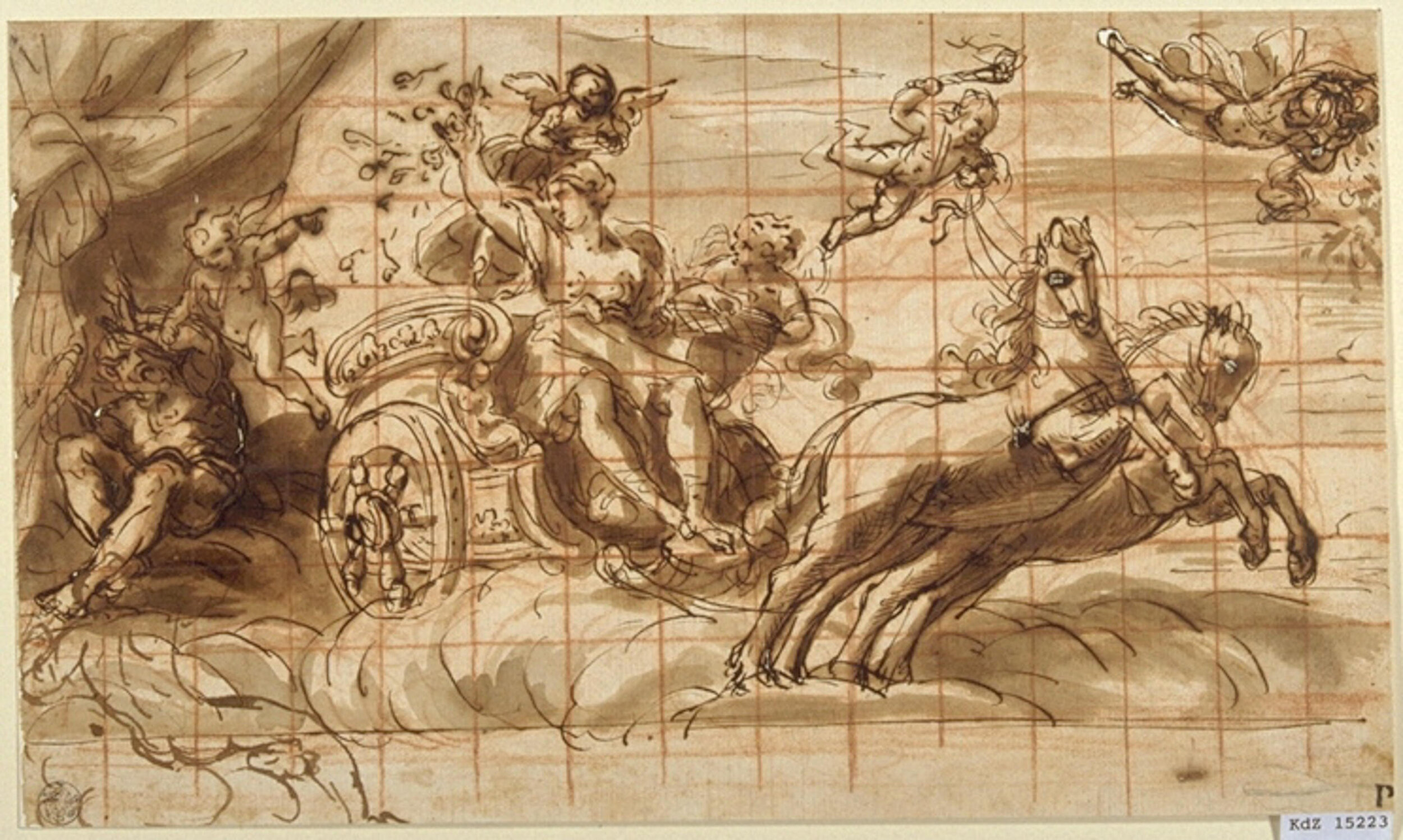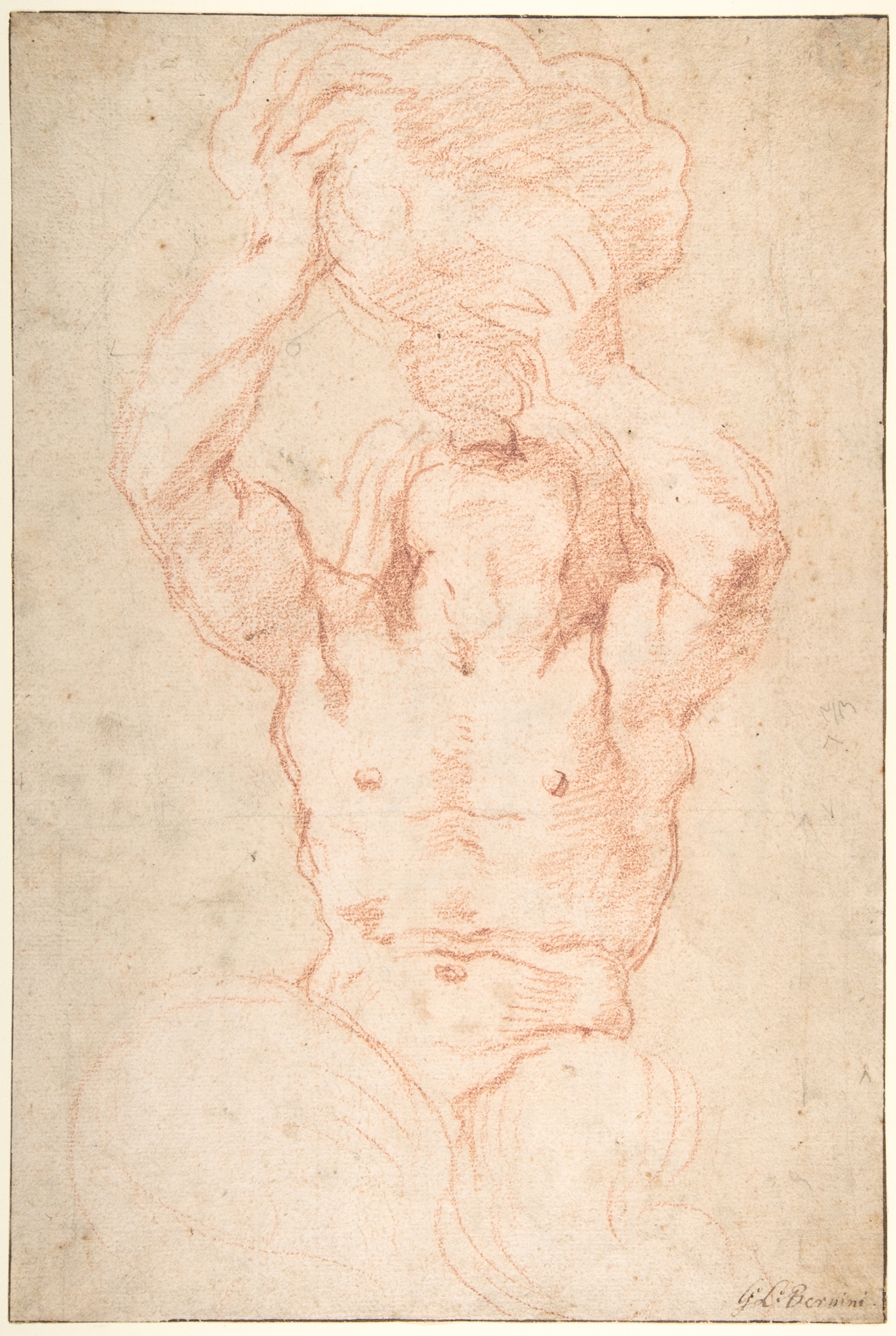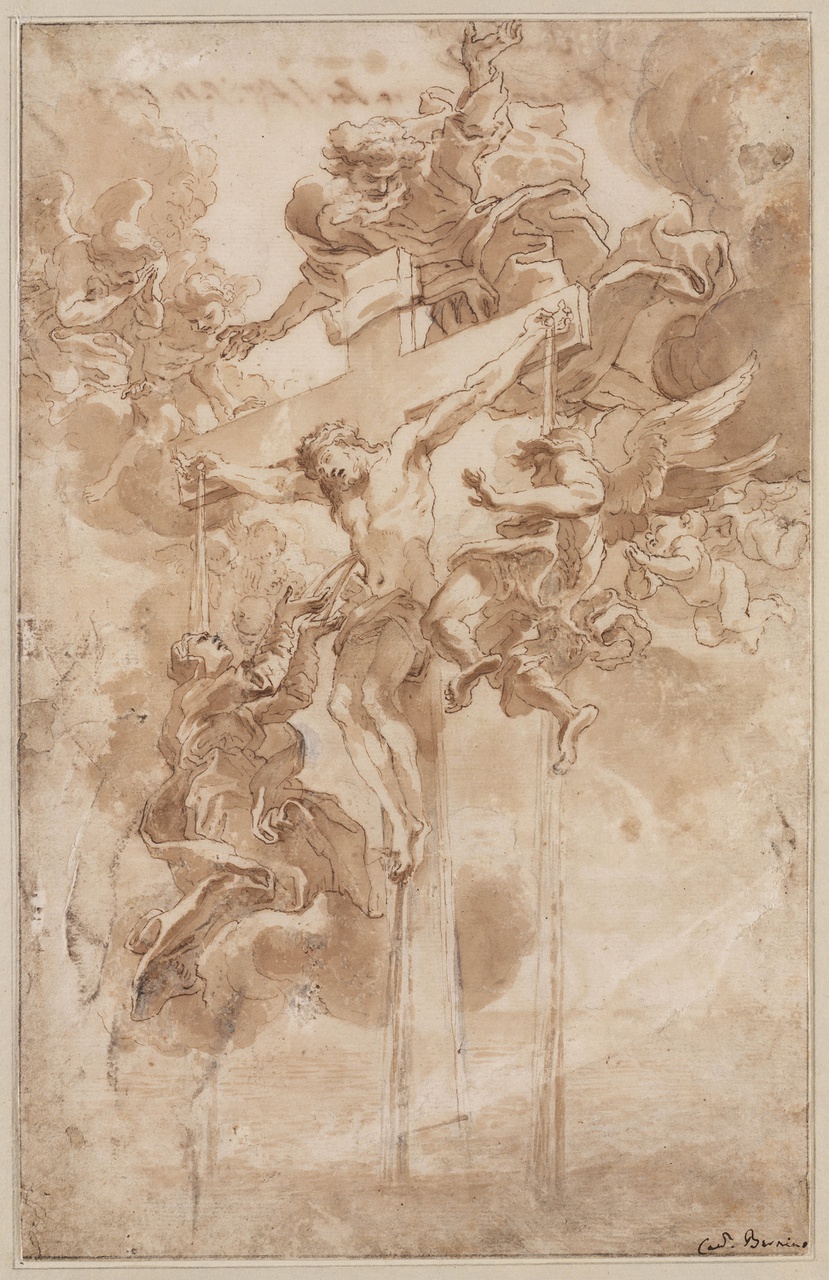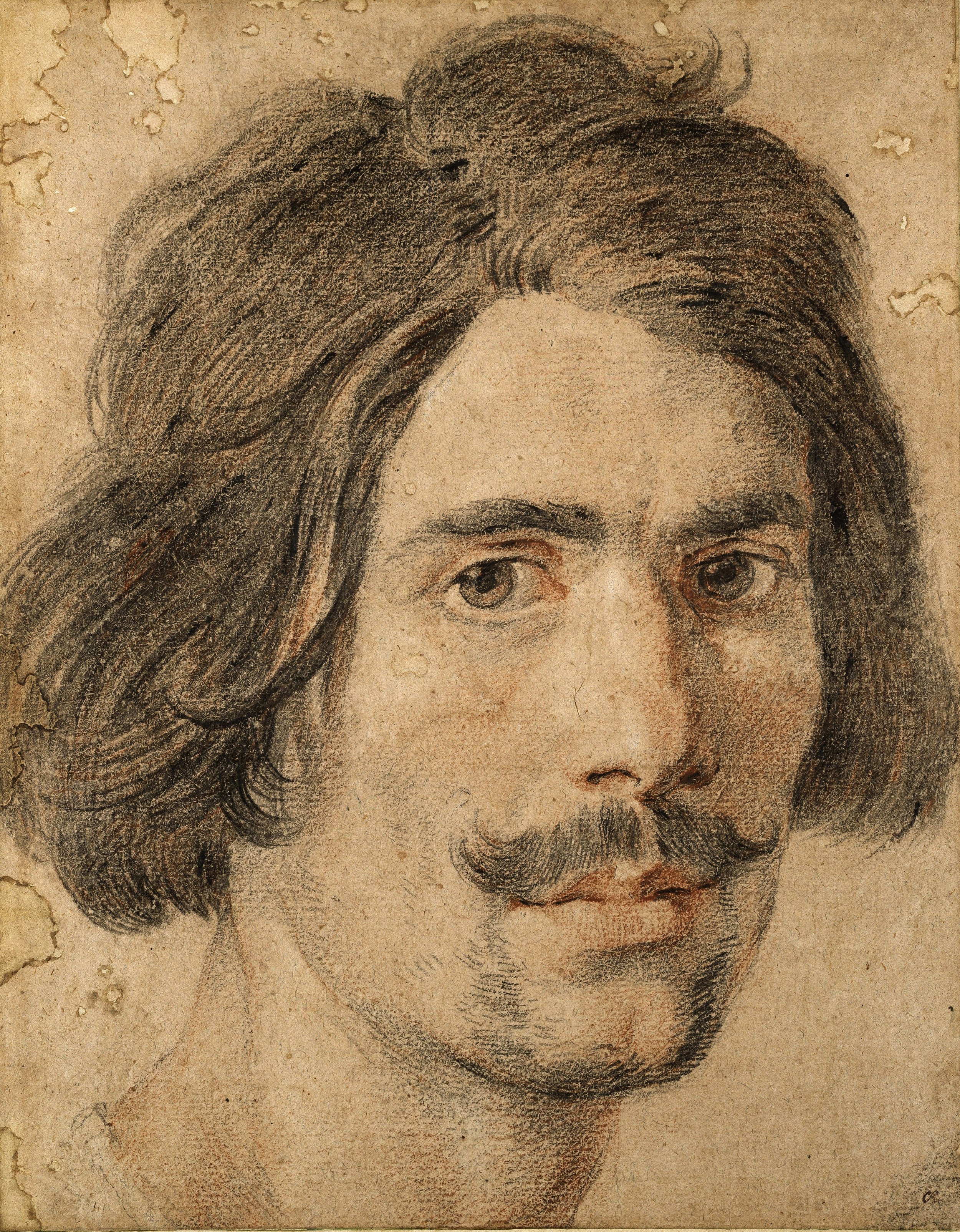
Annibale Carracci, Study for an Angel (recto), ca. 1600-1602, charcoal or soft black chalk, highlighted with white chalk, on blue paper, New York, Metropolitan Museum of Art.
Annibale (1560-1609) was the most gifted draughtsman of the Carracci family, using pencil, pen and ink, sanguine, coloured chalks and watercolours, to create portraits, quick sketches from life, landscapes, and male nudes which he used as preparatory drawings for his magnificent frescoes such as those in the Farnese Gallery in Rome

Bernardo Strozzi, Study for St. Francis of Assisi Adoring the Cross, ca. 1615, black and white chalk on oatmeal paper, Adelaide, The Art Gallery of South Australia.

Annibale Carracci, Studies of Decorations for the Farnese Gallery, 16th century, black chalk and reddish brown ink on cream paper, Windsor, Royal Collection.

Guido Reni, The Head of a Woman Looking Up (Judith), ca. 1625-1626, red and black chalk, on originally blue paper now faded to light brown-grey, New York, Metropolitan Museum of Art.

Guercino, Preparatory Drawing for Ceiling Fresco in the Sala dell’Aurora, ca. 1621, pen and brown ink and brown wash with red chalk on laid paper, Berlin, Staatliche Museum.
The squaring on this paper enabled Guercino to transfer his design square by square onto the ceiling. Squaring was one of a number of techniques used by artists since the 15th century to transfer images onto various supports as well as to make workshop copies of master designs.

Michelangelo Merisi da Caravaggio, Cloaked Figure, 16th century, red and black chalk, heightened with white chalk, on off-white antique laid paper, Massachusetts, Harvard Art Museums, Fogg Art Museum.
This is one of very few drawings thought to be by Caravaggio who worked at great speed, from live models, scoring basic guides directly onto the canvas with the end of the brush handle.

Gian Lorenzo Bernini, Study for a Triton (recto), ca. 1642-1643, red chalk on paper, the background tinted with an almost imperceptible pale brown wash, New York, Metropolitan Museum of Art.

Giovanni Lorenzo Bernini, Allegory on the Holy Blood of Christ, 1670, brown pen, brown brush, black chalk, white highlight, Haarlem, Teylers Museum.
Although Bernini is mainly known as a sculptor, he was a brilliant painter and draughtsman too. In this drawing, which was also the subject for a print and painting, the blood dripping from the crucified Christ’s wounds fills an ocean, and the Virgin and angels swirl around the cross.

Gian Lorenzo Bernini, Self-Portrait, ca. 1635, black, white and red chalk on paper, Oxford, Ashmolean Museum.

Salvator Rosa, St. Paul, Hermit, ca. 1615-73, pen and brown and black ink, brown wash, over black chalk, corrected and highlighted with grey gouache, New York, Metropolitan Museum of Art.

Luca Giordano, The Triumph of Cybele, ca. 1697, brush and brown wash over black chalk, New York, Metropolitan Museum of Art.

Mattia Preti, Kneeling Woman, 17th century, red chalk on light brown paper, New York, Metropolitan Museum of Art.

Salvator Rosa, The Fall of the Giants, ca. 1663, Pen and brown ink, over charcoal, New York, The Metropolitan Museum.












